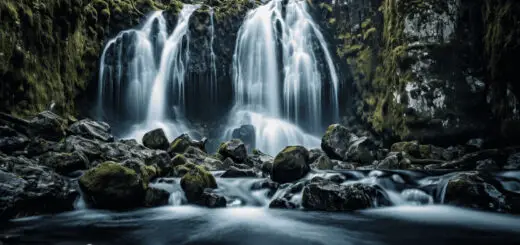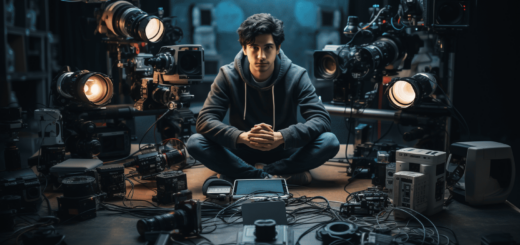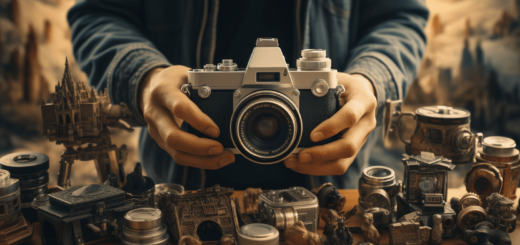AI for Aspiring Photographers: Leveraging Artificial Intelligence for Professional Results
In this digital era, aspiring photographers are continuously seeking innovative ways to enhance their skills and achieve professional results. One cutting-edge technology that has gained immense traction within the world of photography is Artificial Intelligence (AI). This article delves deep into how leveraging AI can help photographers up their game, produce stunning images, and create a competitive edge in the market.
Table of Contents
- Understanding AI and Its Applications in Photography
- Benefits of AI for Aspiring Photographers
- AI-Powered Tools and Techniques for Improved Photography
- Optimizing Your Images Using AI-Enhanced Software
- The Future of AI in Photography
- Frequently Asked Questions
Understanding AI and Its Applications in Photography
Artificial Intelligence refers to the field of computer science that aims to create machines capable of mimicking human intelligence and decision-making processes. As AI algorithms and software continue to advance, they have found their way into the realm of photography, providing numerous benefits and opportunities for both novice and professional photographers alike. Some key applications of AI in photography include:
- Image Recognition and Detection: AI algorithms can identify, classify, and tag subjects in photographs, making it easier to search and organize large collections.
- Automatic Settings Adjustment: Cameras equipped with AI can automatically optimize settings such as exposure, focus, and white balance, based on the scene being captured.
- Image Enhancement and Editing: AI-powered software can analyze and improve image quality, correct flaws, and streamline the post-processing workflow.
- Auto-curation: AI can analyze huge photo libraries and select the best images, often resulting in more visually appealing collections.
- Composition: Guided by AI, photographers can receive real-time assistance on composition, helping them to create striking images.
Benefits of AI for Aspiring Photographers
Aspiring photographers can leverage AI to achieve professional results and simplify their workflow. The following are some key benefits of utilizing AI in photography:
- Time Saving: AI can speed up the post-processing workflow, automatically optimizing images and reducing the need for manual editing.
- Improved Image Quality: AI can enhance image quality by correcting flaws, optimizing exposure and colors, and adding intricate details to the composition.
- Ease of Use: Thanks to AI-powered cameras and software, photographers can now access advanced features and techniques without needing specialized expertise.
- Inspiration and Creativity: AI can provide new perspectives and ideas by analyzing existing images and suggesting novel compositions and styles.
- Competitive Edge: Harnessing the power of AI can result in stunning, high-quality images that stand out from the competition.
AI-Powered Tools and Techniques forImproved Photography
Various AI-powered tools and techniques are gaining prominence in the world of photography. Some of these resources can make a photographer’s life easier while improving the quality of their output. Here is a list of popular AI-based tools and techniques that photographers should consider exploring:
- Topaz Labs: A remarkable software suite containing AI-enhanced tools for noise reduction, image enlargement, and overall image quality improvement.
- Luminar AI: A user-friendly AI-powered photo-editing software capable of enhancing images with a single click, auto-adjusting alignment, optimizing colors, and providing creative suggestions.
- Google Photos: A well-known app that incorporates AI technology for automating image organization, searching through images using keywords, and automatically editing photos.
- Adobe Sensei: Integrated into Adobe’s suite of applications, this AI technology streamlines various photography workflows including image selection, masking, and content-aware fill.
- DeepArt.io: An AI-driven tool that turns photographs into artistic masterpieces simulating various painting styles like Van Gogh or Picasso.
- AI-Enhanced Camera Apps: Several smartphone camera apps, such as Google Camera and Camerai, use AI algorithms for optimizing settings, automating adjustments, and enhancing image quality.
Optimizing Your Images Using AI-Enhanced Software
It’s imperative for photographers to optimize their images for professional results. Fortunately, AI-enhanced software can streamline this process and deliver stunning outcomes. Here are a few ways you can optimize your images using AI-powered tools:
- Noise Reduction: Use AI-enhanced noise reduction tools such as Topaz DeNoise AI or DxO PhotoLab to remove artifacts and graininess without compromising image details.
- Image Enlargement: Preserve the quality of your images while enlarging them with AI-powered upscaling tools, such as Topaz Gigapixel AI or ON1 Resize AI.
- Automatic Adjustments: Leverage software like Luminar AI or Adobe Lightroom to automatically optimize exposure, colors, and other aspects of your images.
- Sharpening and Detail Enhancement: Utilize AI-enhanced sharpening tools like Topaz Sharpen AI or Photoshop’s Smart Sharpen to refine image details and textures.
- Advanced Editing Features: Creatively experiment with AI-driven effects and suggestions from software like Luminar AI, DeepArt.io, or Prisma for truly innovative results.
The Future of AI in Photography
The future of AI in photography appears to be bright and full of possibilities. As advanced technologies continue to evolve, there’s a strong likelihood that they will revolutionize all aspects of photography, from pre-production through post-processing. Some potential future developments could include:
- Further advancements in AI-powered cameras, with superior image recognition and real-time settings optimization.
- New AI-driven techniques for merging and post-processing images, allowing for increased creativity and customization.
- Integration of AI into drones and robotic camera systems, facilitating hands-free photography and advanced perspectives.
- Real-time AI assistance for guiding photographers in improving composition and capturing captivating images.
- AI-enhanced virtual reality and augmented reality photography experiences, enabling the creation of immersive and interactive content.
Frequently Asked Questions
1. Can AI replace a professional photographer?
AI is a powerful tool that enhances a photographer’s capabilities; however, at the moment, it cannot replace the creative vision and intuition of a professional photographer. AI can help photographers streamline their workflow, open up new creative possibilities, and improve image quality, but the innate artistic ability of a photographer remains irreplaceable.
2. How do AI cameras work?
AI cameras utilize advanced algorithms to analyze the scene being captured, recognizing various elements such as subjects, colors, lighting, and distance. Based on these analyses, the AI-powered camera optimizes settings such as exposure, focus, and white balance, improving the overall quality of the image.
3. Are AI-enhancements exclusive only to high-end cameras?
No, AI-enhancements are not limited to high-end cameras. AI capabilities are increasingly being incorporated into smartphone camera apps and accessible photography tools, providing benefits to photographers of all skill levels, from amateurs to professionals.
4. Is it challenging to incorporate AI into my existing photographic workflow?
Integrating AI into your existing photography workflow is a learning process, but it is generally not difficult. Many AI-powered tools and software solutions are user-friendly, intuitive, and designed to easily complement a photographer’s existing processes. As you become familiar with AI-driven features and capabilities, you can adapt your workflow to make the most of this transformative technology.
5. Can AI-enhanced software improve poor-quality images?
Yes, AI-enhanced software is known for its ability to improve the quality of images, even those that may appear unsalvageable. By optimizing contrast, lighting, colors, and other elements, AI-enhanced software can breathe new life into photographs and significantly elevate their quality. However, it is essential to remember that the results may vary depending on numerous factors, such as the original image quality and the capabilities of the AI software being used.
6. What should I look for when choosing AI-powered photography tools and software?
When selecting AI-powered photography tools and software, consider ease of use, integration with your existing software, functionality, and cost. To choose the best tool for your needs, start by assessing your skill level, desired outcomes, and budget, and then explore available options by reading reviews and trying demo versions where available.
In conclusion, AI is poised to play an increasingly substantial role in the world of photography, providing aspiring photographers with innovative tools and techniques for achieving professional results. By embracing this technology and incorporating it into their workflows, photographers can enhance their creative edge and produce stunning, high-quality images that stand out in today’s highly competitive market.



